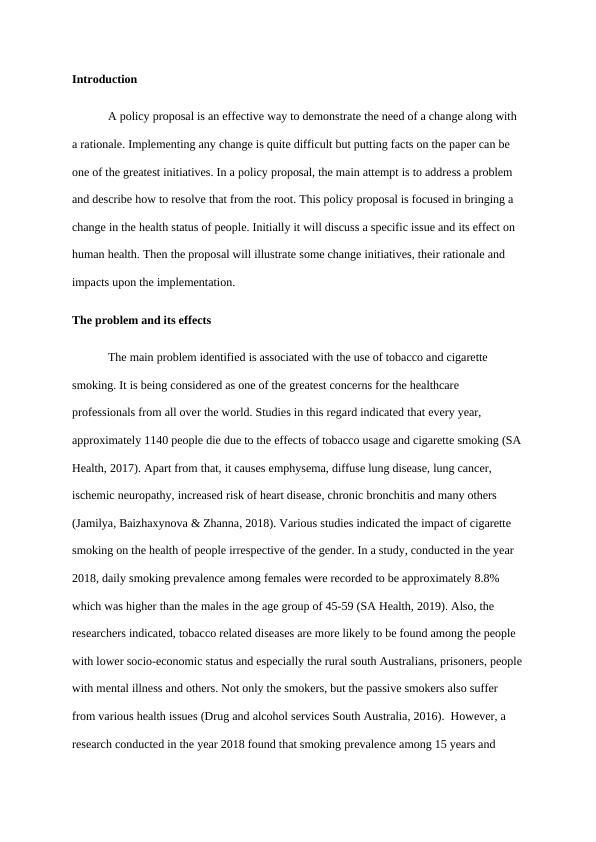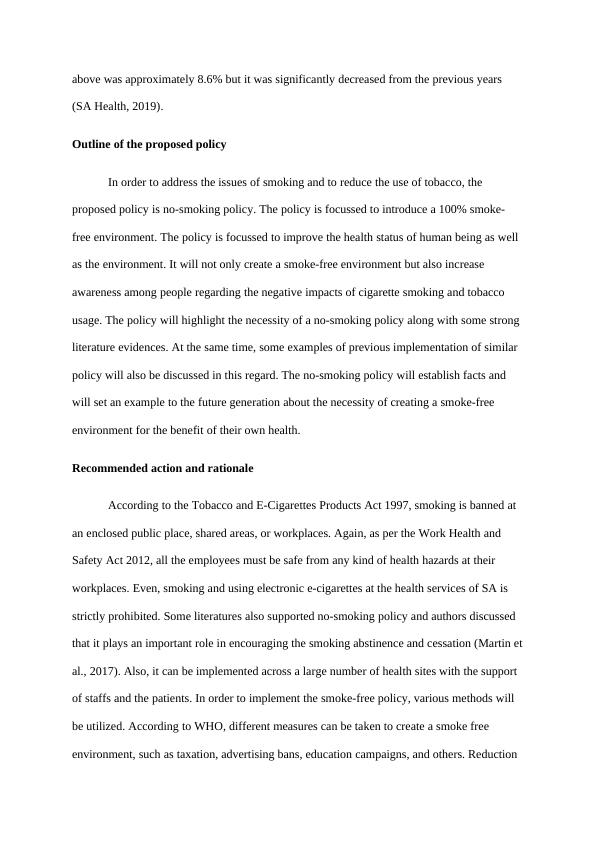Policy Proposal Research 2022
Analysis of the smoke-free policy in all South Australian public health services and all SA health entities, including the aim of the policy, identified issues, statistics and research findings, relevant acts and regulations, obstacles or implementation issues, and conclusion.
6 Pages1507 Words26 Views
Added on 2022-09-18
Policy Proposal Research 2022
Analysis of the smoke-free policy in all South Australian public health services and all SA health entities, including the aim of the policy, identified issues, statistics and research findings, relevant acts and regulations, obstacles or implementation issues, and conclusion.
Added on 2022-09-18
ShareRelated Documents
End of preview
Want to access all the pages? Upload your documents or become a member.
Epidemiological Triad United States Article 2022
|5
|461
|25
Cigarette Smoking Policy in Saudi Arabia
|4
|980
|55
Preventive Intervention of Teenage Smoking | Essay
|28
|6646
|21
Economic Theory: Demand for Cigarettes and Price Elasticity
|13
|3095
|54
Emphysema: Causes, Prevalence, Risk Factors, Symptoms, Diagnosis, Treatment and Prevention
|7
|1666
|177
Smoking prevalence in Australia and types of unemployment
|8
|1379
|102



